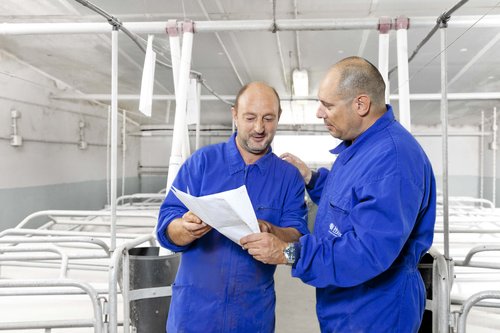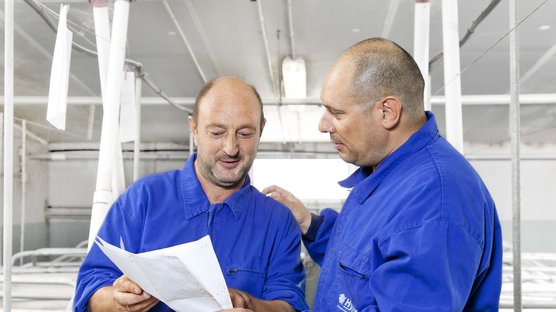
Published on Jan. 18, 2022
Paving the way with sustainable swine breeding
Sustainable breeding was a logical step from balanced breeding. Hypor, the swine brand of Hendrix Genetics, has been dedicated to balanced breeding for many years and our product portfolio which generates profitability for the entire production chain demonstrates the fruits of our labor. Sustainable swine breeding strengthens that philosophy, by ensuring our products satisfy the existing and growing needs for the pork chain to be economically viable, socially acceptable, and environmentally sustainable. As a global leader, we are setting the standards on economic, social, and environmental sustainability and this evolution is more important than ever.
A foundation built on economics
For a sound pork sector and as a driving factor in every production phase, economics is very important. The genetic progress we aim to deliver with our Hypor sows, piglets, finishers, and pork, creates economic returns for the entire pork chain. Our breeding philosophy starts with a calm, (feed) efficient sow, that is easy to manage and with the capacity to wean her own piglets, all in a longer reproductive life. Farm labor is a scarce resource and should not need to be used on tasks that a sow, selected for self-reliance, can perform. A part of self-reliance includes having a sow with the right number of teats, providing her piglets with quality colostrum and milk to keep them strong and healthy.
Characteristics of piglet quality such as piglet birth weight and litter uniformity are also easily related to economic viability. Research supports that when piglets are born with a heavy birth weight, they are more likely to survive, grow faster, and reach full value at the packing plant. At Hypor, we have set a standard for sustainable piglet birth weight at 1.5 kg (3.3lbs), which is a standard we are meeting today. The other piece of piglet quality is the uniformity of piglets within a litter. By breeding for better uniformity at birth, this continues throughout life, bringing uniform finishers, with strong growth and sustainable feed conversion in our entire product portfolio, delivering full value from wean to the finish line. Our goal is to hit the sweet spot on the grid through excellent carcass characteristics. This includes high carcass yield, low drip loss, the right level of muscle depth, fat depth, and lean meat with the desired color and marbling for any market.

A focus on social sustainability
Including selection criteria for self-reliant animals that thrive in all environments ensures that we simultaneously set new standards on social sustainability. Animals that can take care of themselves, with less intervention or support, are an important component of the social sustainability of animal agriculture. This includes sows that perform well in any housing system, as areas around the world have moved or will progress towards free housing for gestation and farrowing systems.
Viable piglets that have heavy and more uniform birth weights within a litter are more likely to survive. Today, we already have very few lightweight pigs at birth. This means already there is evenly matched competition for teats, less piglet management, cross-fostering, and caring for small piglets. All these factors result in happier, healthier pigs. On top of that, we are researching new genetic technologies to eliminate animal treatments like castration, as well as vision and sensor technologies to remove the need for tail-docking. In the end, delicious and nutritious pork is our ultimate promise to the consumer as sustainable breeding and husbandry practices gain further social acceptance.
A smaller footprint on the environment
Hypor is raising the bar on environmental sustainability because we all have this responsibility. To reduce the industry’s footprint, introducing sustainable conversion ratio (SCR) is a key component because there is more to feed conversion than simply calculating feed volume against meat volume. Of course, the continual genetic improvement in feed conversion is key, but we also need to research the effects of emission reducing diets and alternative ingredients; as both are needed to resolve the food-feed-fuel conflict.
While improving feed conversion is the most efficient way to reduce the environmental impact of the pork sector, pigs are considered nature’s easy eaters, natures own recyclers. This means they have the potential to be used to reduce the amount of food that ends up as waste. Food and food by-product waste is also a waste of the land, labor, water, and nutrients that were invested in growing it. A more sustainable way to measure feed conversion is by adding the environmental impact into the ratio and switch to SCR.
Join us!
Join us on this new journey. Setting the standard in sustainable swine breeding, which is our contribution to Better breeding today for a brighter life tomorrow.



